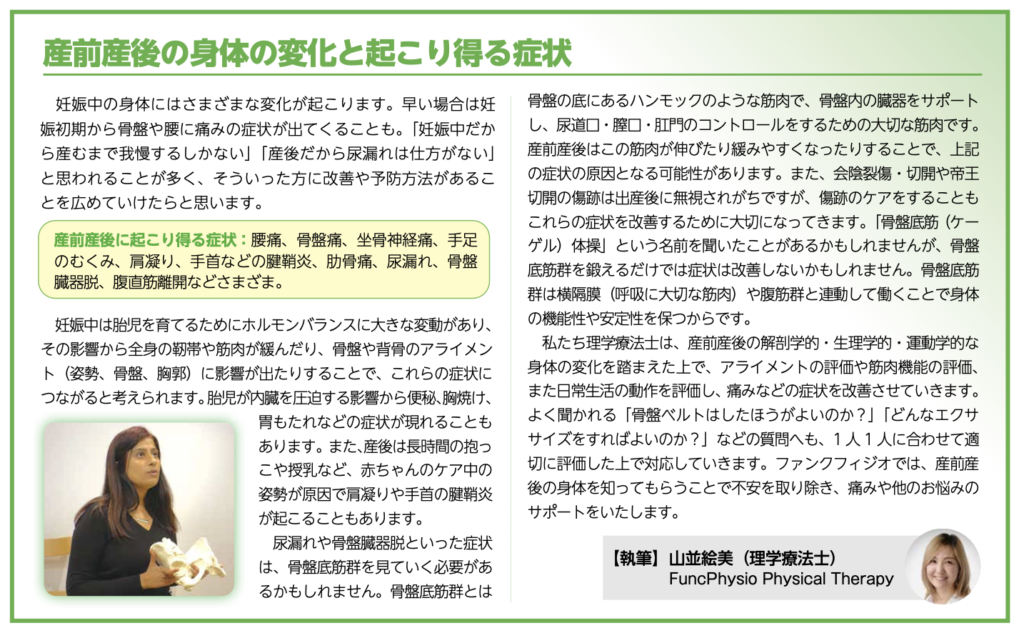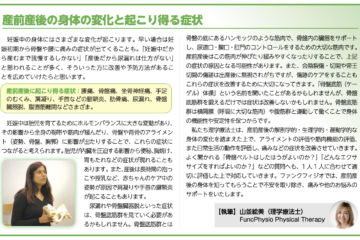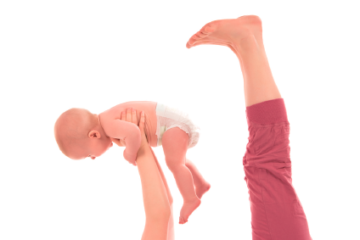The body undergoes many changes during pregnancy. In some cases, symptoms of pelvic or back pain may appear as early as the first trimester of pregnancy. Many people think, “I have to endure it because I’m pregnant” or “It’s inevitable to have urinary incontinence after childbirth,” and we hope to spread the word that there are ways to improve and prevent such symptoms.
Prenatal and postpartum symptoms can include: back pain, pelvic pain, sciatica, swelling of hands and feet, stiff shoulders, wrist and other tendonitis, rib pain, urine leakage, pelvic, organ prolapse, rectus abdominis muscle separation, and many others.
During pregnancy, there are large fluctuations in hormonal balance in order to nurture the fetus, which can lead to the above symptoms by loosening of all the body’s bands and muscles and affecting the alignment of the pelvis and spine (posture, pelvis, and rib cage).
Symptoms such as constipation, heartburn, and indigestion may also arise due to the pressure exerted by the fetus on internal organs. Additionally, after childbirth, prolonged periods of carrying or breastfeeding in certain postures during baby care may cause shoulder stiffness or tendonitis in the wrists.
Symptoms such as urinary leakage and pelvic organ prolapse may require a look at the pelvic floor muscle group. The pelvic floor muscle group is a hammock-like muscle in the pelvic floor that is important for supporting the pelvic organs and controlling the urethral opening, ridge and anus.
Before and after childbirth, this muscle is easily stretched and loosened, which can cause the symptoms described above. In addition, scars from perineal lacerations, incisions, and cesarean sections are often ignored after childbirth, but taking care of scars is also important to improve these symptoms.
You may have heard of “pelvic floor (Kegel) exercises,” but simply exercising the pelvic floor muscles may not be sufficient for symptom improvement. The pelvic floor muscles work in coordination with the diaphragm (an essential respiratory muscle) and abdominal muscle groups to maintain the functionality and stability of the body.
Physical therapists, with an understanding of the anatomical, physiological, and kinematic changes in the body before and after childbirth, conduct assessments of alignment, muscle function, and daily life movements to improve symptoms such as pain.
We are often asked, “Should I wear a pelvic belt?”, “What exercises should I do?”. We are here to help you answering such questions. FuncPhysio Physical Therapy can also support you get to know your body before and after childbirth to relieve your anxiety, pain, and other concerns.

FuncPhysio Physical Therapy

